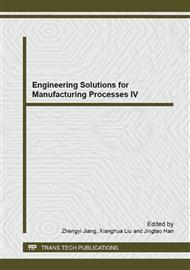p.1638
p.1644
p.1649
p.1653
p.1660
p.1667
p.1672
p.1676
p.1680
A Decision Model for Harvesting Eichhornia crassipes Once a Week
Abstract:
We develop a week harvest model of Eichhornia crassipes where harvesters obtain information about harvest area once a week by using GPS data and satellite remote sensing images from growth experiment of Eichhornia crassipes. We show that a harvest amount of Eichhornia crassipes is positively correlated across growth rate and harvest strategy. This experiment was shown to lead to a determination of the model parameters with an overall Goodness of Fit Index of 0.9753 and a maximum sustainable area 14059 (square meter) once a week with total harvest area 154649. This indicates that there is a possibility of obtaining harvest area of Eichhornia crassipes once a week and suggests that it is possible to implement environmental phytoremediation with the harvest once a week at a maximum sustainable area.
Info:
Periodical:
Pages:
1660-1663
Citation:
Online since:
February 2014
Authors:
Price:
Сopyright:
© 2014 Trans Tech Publications Ltd. All Rights Reserved
Share:
Citation:


